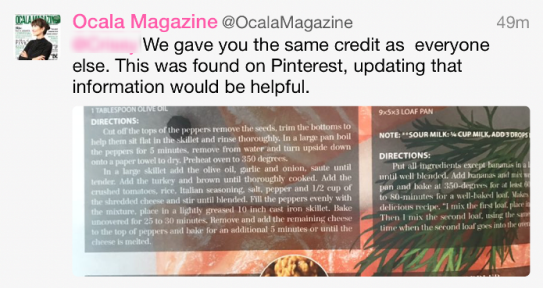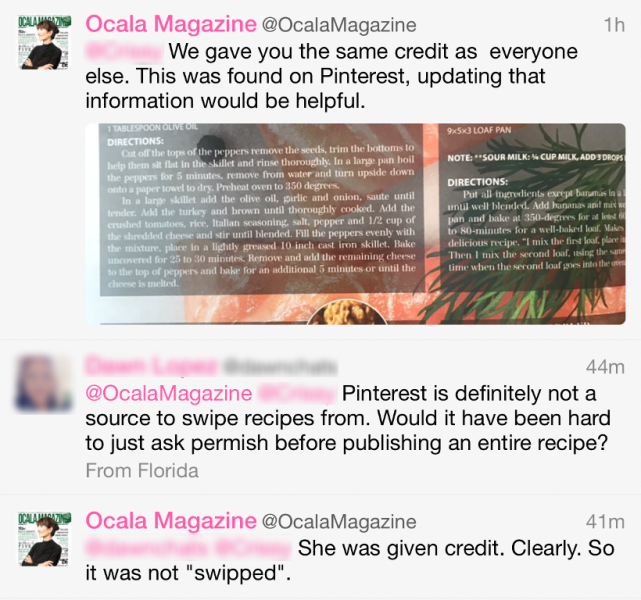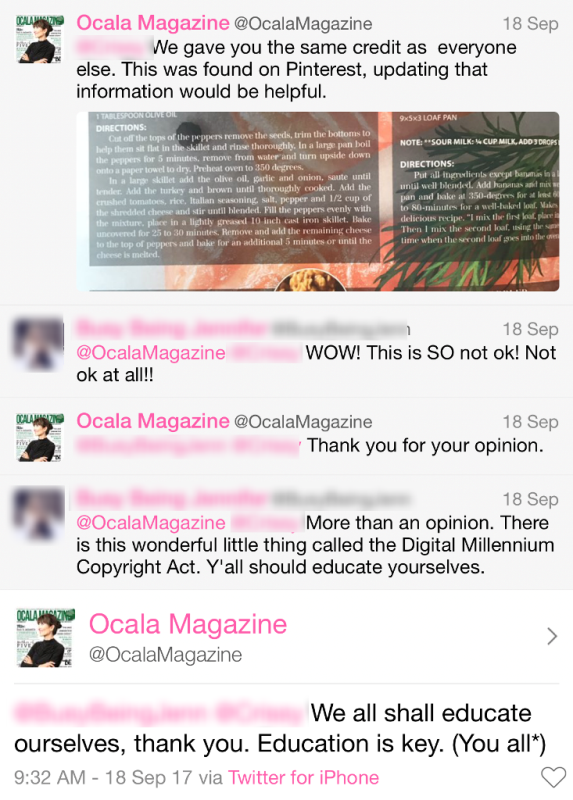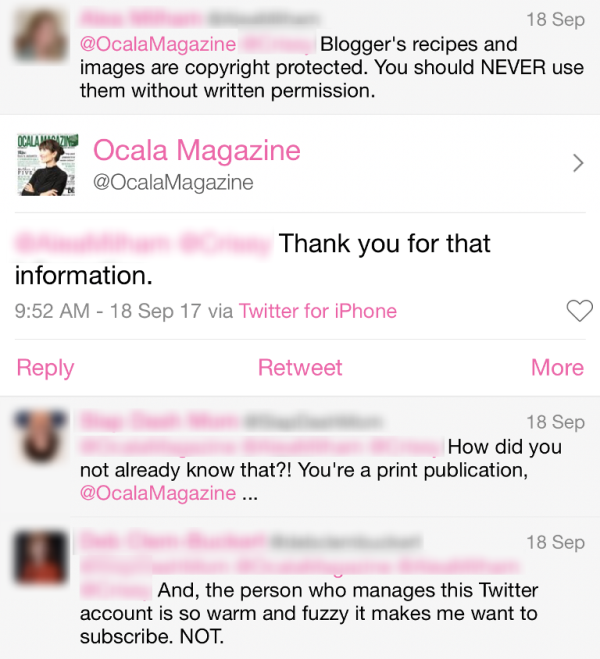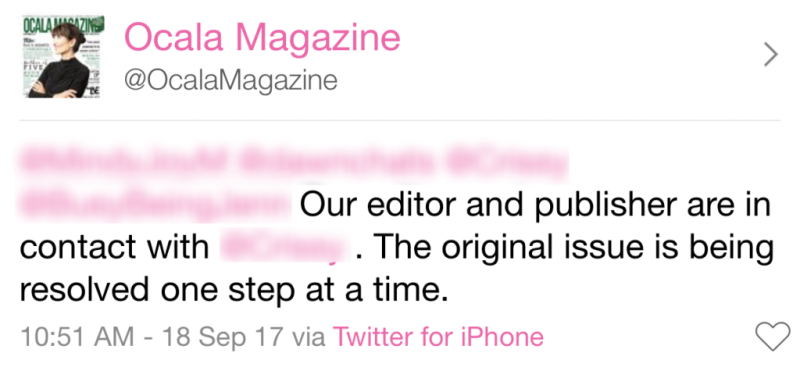If you receive a business complaint on social media, can you stay cool under pressure?
Remember the old phrase – “the customer is always right?”
All businesses should remember social media is not just for networking and promotion, but for customer service as well. And everyone who follows you or writes to you is a potential customer or client.
Recently, a blogger discovered a small local magazine had reprinted one of her recipes. The magazine listed her name as the creator of the recipe, but did not get her permission to re-print her recipe. This is, of course, a clear copyright violation.
When the blogger sent a tweet to the magazine’s Twitter account, their social media rep became defensive.
“We gave you the same credit as everyone else. This was found on Pinterest, updating that information would be helpful.”
*wince* My goodness, where to start here ….
First of all, defending the decision to print a blogger’s content without permission with the “we did it the same way for everyone” excuse is not really an excuse.
Second, using Pinterest as a “source?” No way. Any decent publication should know Pinterest is a content aggregator, not a place to dip into when you’ve run out of original ideas.
Third, and most important … do I sense some sarcasm? Implying that it’s the blogger’s fault the magazine stole her content?
And the blogger certainly took offense to this, based on her reply:
“Are you joking? Pinterest is not a source. It’s a content aggregator. You have to follow through to source content. Due diligence. Try it.”
To which the magazine replied with further sarcasm:
“Apologies for including you in our print. Thanks for addressing this ‘concern’ tactfully. Email the editor if you have existing concerns.”
(Note – the original blogger and some of the other responders later deleted their tweets, so I blurred out everyone’s identities here. However, the magazine did not delete any of their tweets.)
The whole situation got a lot worse when fellow bloggers jumped in to defend the original blogger.
And that’s just a small sampling.
Eventually the magazine said their editors were in touch with the original blogger and stopped responding to comments. But, whoa … the damage was done.
Obviously this was a bad situation that escalated way out of control.
Perhaps whoever runs the magazine’s Twitter account did not realize the magazine was actually in the wrong here. Still, in this situation, when faced with public criticism, the only appropriate response is to thank the user for bringing the issue to their attention and to please DM or email them to discuss further.
A simple initial response such as this one could have avoided what ended up being a huge tweet storm full of condescending and sarcastic comments.
Even if you feel you are NOT in the wrong and have the urge to defend yourself, it’s best to write a simple public acknowledgement of the issue and continue to address the concern privately.
I hope this example of how NOT to do Twitter customer service can act as a learning experience for everyone.


